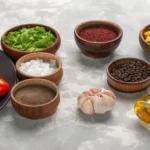How Many Liters in a Gallon: Distinct countries have distinct standard units of measurement for liquids. Liquids are often measured in gallons in the United States, although liters are the norm in many other nations. This makes it difficult to determine the volume of a given container or to convert measurements between different systems. This article will discuss the process of converting gallons to liters, with some examples for everyday situations.
Understanding Gallons and Liters
First, let’s define a gallon and a liter so we can move on to the conversion. In the United States and a few other nations, the gallon is a standard unit of volume measurement. It’s the same as 128 ounces, or four quarts. However, in the SI system, one liter is the universally accepted measure of volume. There are 1,000 milliliters in a liter, making a liter equal to 33.8 ounces.
Converting Gallons to Liters
Multiply the amount of gallons by 3.78541 to get the corresponding number of liters. This calculation will get the volume in liters. From the known relationship between gallons and liters, we can calculate this conversion factor. The metric equivalent of a gallon is 3.78541 liters. The formula for converting between gallons and liters is as follows:
Liters = Gallons x 3.78541
For example, suppose you want to convert 2.5 gallons to liters. In that case, you would multiply 2.5 by 3.78541 to get 9.463525 liters. So 2.5 gallons is equal to 9.46 liters.
Converting Liters to Gallons
The formula for converting liters to gallons is as follows: (number of liters) (3.78541). The answer represents the volume in gallons. The conversion from liters to gallons is as follows:
Gallons = Liters ÷ 3.78541
For example, suppose you want to convert 10 liters to gallons. In that case, you would divide 10 by 3.78541 to get 2.64172 gallons. So 10 liters is equal to 2.64 gallons.
Practical Examples for Everyday Use
Now that you know how the conversion works, let’s have a look at some real-world applications. Let’s say you’ve rented a car for your trip and need to know how many liters of gas you’ll need in a country where the standard unit of measurement is different from the United States’ gallon. To determine how much gas to buy, you’ll need to convert the rental car’s gallon tank capacity, say 15 gallons, into liters. 15 US gallons multiplied by 3.78541 yields 56.78115 L. To put gas in your rental car’s 15-gallon tank, you’ll need to buy 56.78 liters.
Let’s say you’re trying to convert a recipe calling for four cups of water written in gallons to liters. Four cups of water would be 0.96 liters since 0.24 x 4 = 0.96 liters.
Here are some additional information and details that can be added to the article:
Why is the Conversion Important?
There are several situations in which knowing how many liters are in a gallon is crucial. If you’re renting a car for a trip abroad and need to know how much gas it takes, the fuel gauge will show you the amount in liters. You’ll need to convert the measures from liters to gallons, or vice versa, if you’re using a recipe from a country that utilizes the metric system in the kitchen.
The Importance of Accuracy
Accuracy in liquid measurement is essential. Changing the amount of liquid in a recipe or testing the limits of a vehicle can have dramatic effects. This highlights the significance of adopting appropriate measurement units and ensuring precise conversions between them. A minor error in estimation can have a major impact on the final volume of liquid.
Converting Other Units of Volume
While gallons and liters are more prevalent, alternative units of volume measurement such as pints, quarts, milliliters, and fluid ounces are not unheard of. You can use conversion tools on the internet or the following factors to change these units into gallons or liters:
1 pint = 0.473176 liters
1 quart = 0.946353 liters
1 milliliter = 0.001 liters
1 fluid ounce = 0.0295735 liters
The link between each unit and liters, the universally accepted unit of volume measurement, is the basis for these conversion factors.
Conclusion
Anyone who often works with liquids needs to know how to convert between gallons and liters. Once you learn the conversion formula, you’ll have no trouble converting between units of measure. You may immediately put this knowledge to use in your regular life, whether you’re a chef, a traveler, or someone who has to measure liquids.
Finally, knowing how many liters are in a gallon and vice versa is an important skill that has many practical applications. You can quickly and reliably measure liquids with the help of the accompanying examples and straightforward methods for converting between these units. If you don’t want to ruin your recipe or your car’s performance, you need to be exact and use the right units of measurement.











